Let’s be honest—most emails don’t get read. In fact, according to Mailchimp, the average email open rate is just 21.33%. If you want replies, clicks, or even a simple “got it,” your email needs more than just good intentions—it needs structure.
This guide breaks down the 5 elements of an email that actually get results. Whether you’re cold emailing, following up, or pitching a new client, this is the no-fluff playbook to get it right.
Why Email Remains a Powerful Tool in Professional Communication

Email still works—and works well. Over 4.3 billion people use email daily (Statista, 2024). It’s fast, easy, and professional. Whether you’re sending a sales email, cold email, or a formal email, the structure matters.
When you follow the 5 elements of an email, your message feels clear, respectful, and more likely to get a reply.
How Email Marketing Uses These 5 Elements to Drive Conversions
Email marketing is one of the top tools to reach customers. But not every email works. The difference? These essential elements:
- A compelling subject line that grabs the recipient’s attention
- A professional email address with correct sender’s information, including the sender's email address as a key element for credibility and recognition
- A clear email body with essential details
- A strong call to action that’s easy to follow
- A neat email signature with your business name, company name, and social media links
“Run smarter email campaigns without writing from scratch. Alore’s Campaign Management System includes pre-built workflows and signature customization to match your brand.
👉 Start for free and send better emails from day one
5 Essential Elements of an Email (A Must-Include)
The key components of an email include subject, body, CTA, and signature.
1. Crafting a Compelling Subject Line

The subject line is the first thing the email recipient sees in their inbox. It decides whether your message gets opened—or ignored, making your subject field crucial.
A compelling subject line is essential for capturing the recipient's attention and increasing open rates.
How to do it:
- Keep it short—6 to 9 words is best.
- Make it clear, not clever.
- Avoid spammy words like “FREE” or “Buy Now.”
- Match it to the email body.
Example subject lines:
- “Quick question about your project”
- “Idea for your next campaign”
- “Following up on our call”
Emails with personalized subject lines have a 26% higher open rate (Campaign Monitor, 2023).
2. Using a Professional Email Address and Sender’s Information
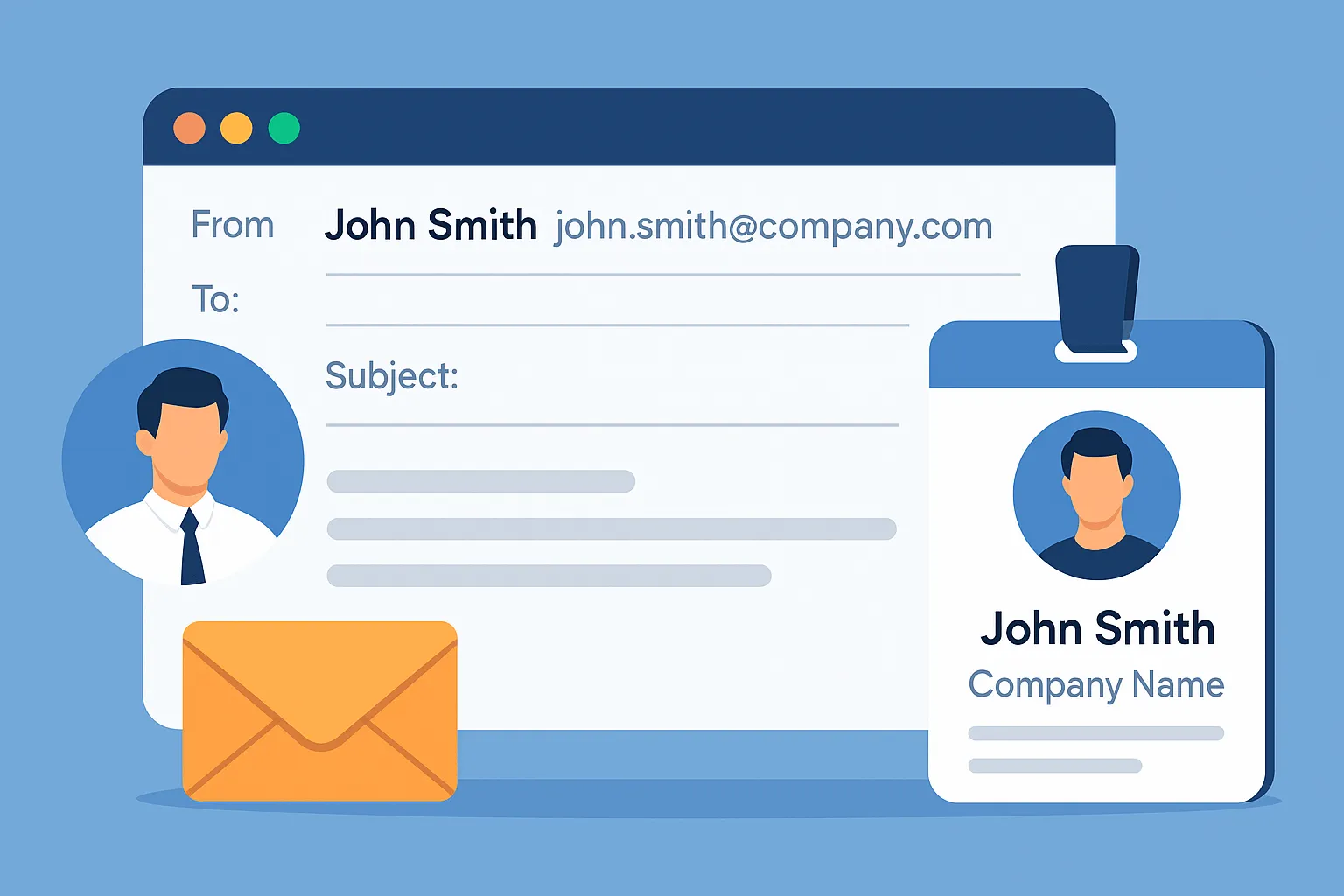
A professional email address (like yourname@yourcompany.com) looks more trustworthy than a random Gmail or “not john@email.com.”
How to do it:
- Use a domain with your company name.
- Add your real sender’s name and company name in the “From” field.
- Avoid using nicknames or team aliases.
Why it matters: When the sender’s email address looks real and relevant, especially to various email providers the chances of landing in the spam folder drop. It also helps build trust with potential clients and improve email marketing campaign results.
Business Email Etiquette That Builds Trust
Your email tone, structure, body language and signature reflect your brand’s professionalism. A professional tone builds credibility and shows respect. Good eye contact in real life translates to direct, respectful language in email.
Tips to follow:
- Start with a professional greeting (e.g., “Hi Sarah,”).
- Keep sentences clear and simple.
- Use proper capitalization to maintain a polished and formal tone.
- Use proper grammar and spell check before hitting send.
- End with a polite closing statement and a detailed email signature (include social media links and phone number).
Pro Tip: A clear, polite message with full sender’s information shows you care—and that builds trust, which is vital for ongoing conversations .
3. Writing a Clear and Engaging Email Body

The email body is the main part of your message. It explains what you're offering, asking, or following up on, including specific details.
How to do it:
- Use a short opening sentence to greet and connect. Short sentences make for easy communication and better readability.
- Keep it simple and on point. Avoid long blocks of text.
- Use bullet points if you’re sharing steps, benefits, or ideas.
- Be clear about the essential details and purpose of the email.
Example: Instead of saying, “I wanted to reach out regarding your amazing company and see if there’s a synergy,” say: “I’m reaching out to share how our tool can save your team 6 hours a week.”
Tip: Always double-check for proper grammar, capitalized sentences, and spell check before you hit send.
“Emails written at a 3rd-grade reading level get 36% more responses.” — Boomerang, 2023
When to Use a Formal Email Tone
A formal email is used in professional settings like job outreach, corporate clients, or first-time messages to potential clients.
How to do it:
- Use a professional greeting like “Dear Mr. Smith” or “Hello Dr. Patel.”
- Avoid slang or emojis.
- Be respectful and polite.
- Include your full sender’s information and a professional email signature with your business name and social media links.
Example: “I hope this message finds you well. I’d like to request a meeting to discuss…”
4. Including a Clear Call to Action (CTA)
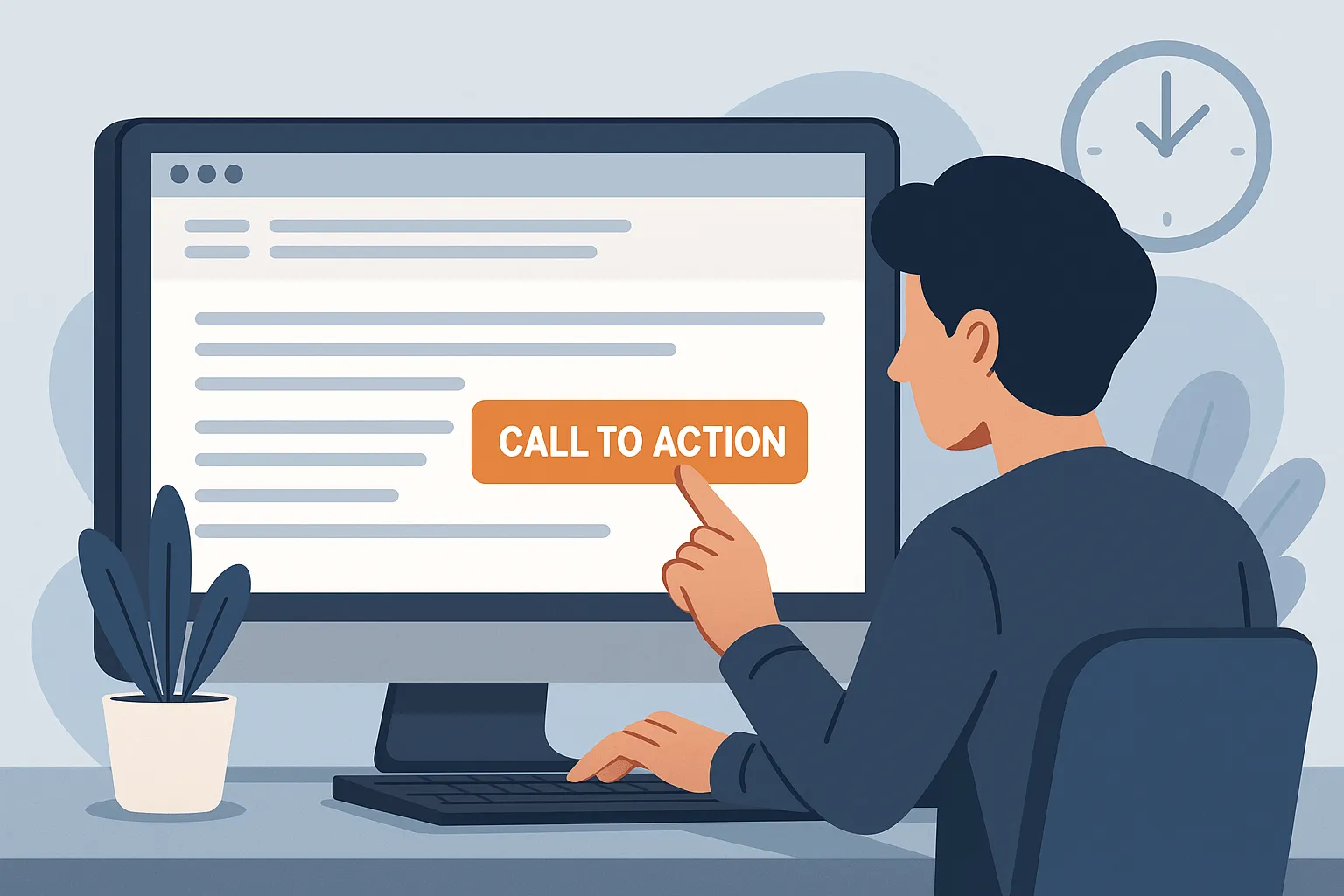
Your primary goal should be clear from the start of the email. A call to action tells the reader exactly what you want them to do next—like book a call or reply.
How to do it:
- Place the CTA at the end of the email body.
- Be specific. Use action oriented language like “Download,” “Reply,” or “Schedule.”
- Make it easy. Add an embedded link or suggest a time.
- Avoid asking for too many things at once.
Examples:
- “Can we connect Tuesday at 3 PM?”
- “Click here to try the demo.”
Clear CTAs can boost email click rates by up to 28% (Campaign Monitor, 2023).
5. Ending with a Professional Email Signature
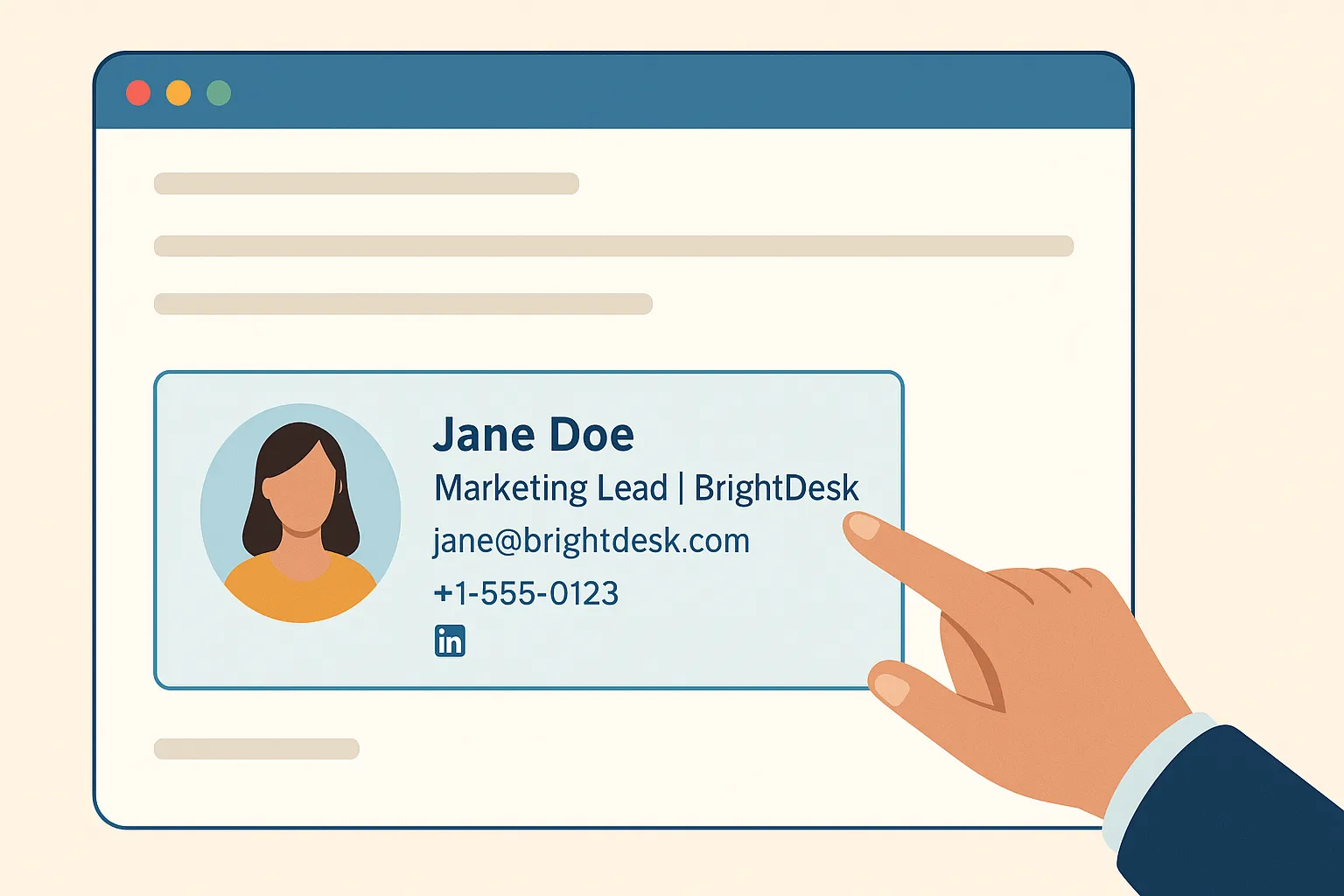
A professional email signature is the block of text at the end of your email. It gives the reader your contact details and builds trust.
How to do it: Include these in your signature:
- Your full name and job title
- Company name and business name
- Phone number and email address
- Social media links (like LinkedIn)
- A formal sign off, like “Best regards,” “Regards,” or “Thanks”
Example Signature:
Jane Doe Marketing Lead | BrightDeskjane@brightdesk.com | +1-555-0123 [LinkedIn Profile]
Why it matters: A clean email signature shows professionalism. Using a formal sign-off like "Best regards" helps maintain professionalism and leaves a positive final impression. It makes it easy for email recipients to contact you again.
62% of professionals say a well-formatted email signature improves credibility. — Newoldstamp, 2023
Pro Tip: Avoid using images that break on different email clients.
Closing Statement vs. Signature—What’s the Difference?
Mastering the key elements helps ensure your emails get opened and read.
How the Inbox Preview and First Two Lines Shape Engagement
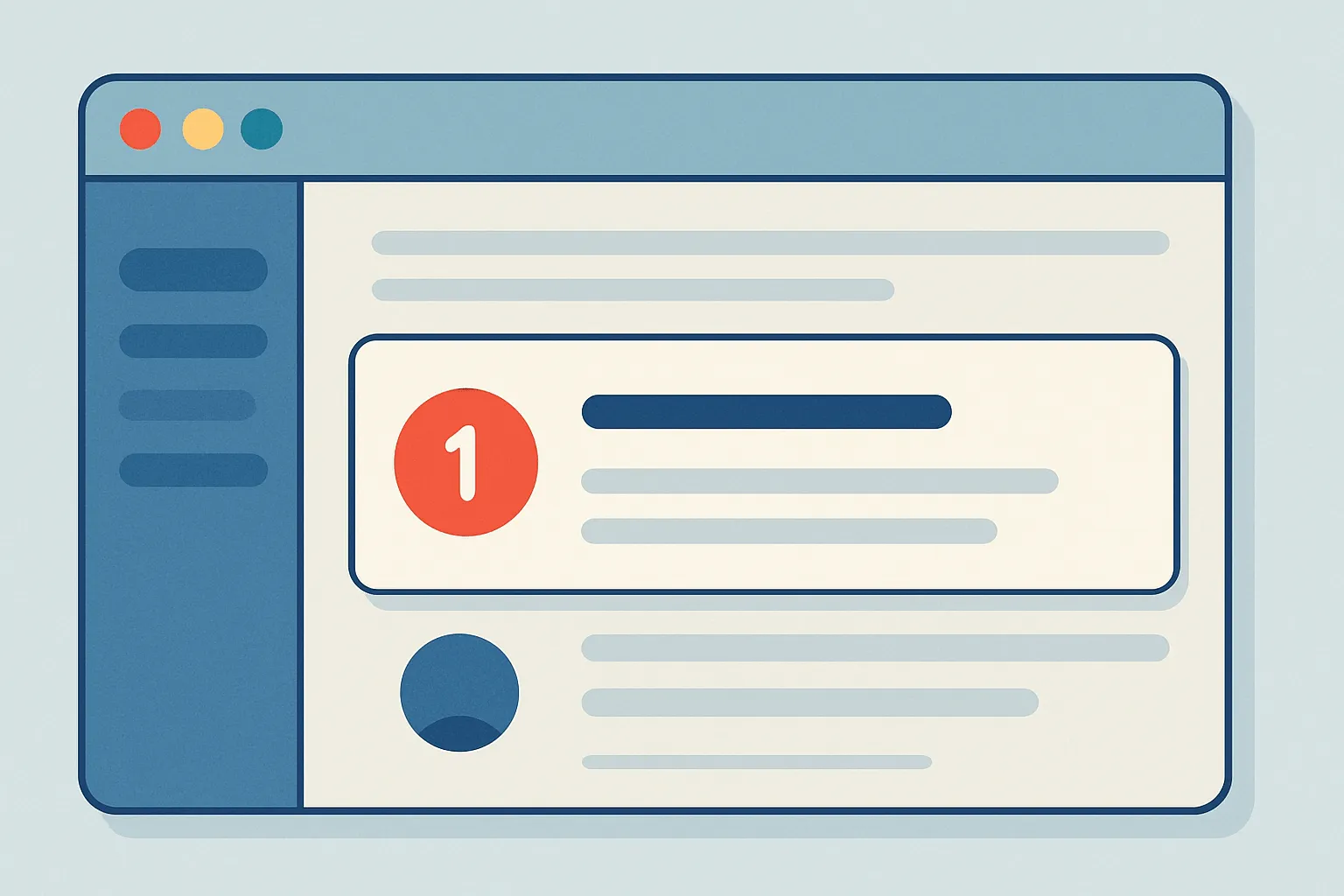
Before someone opens your email, they see three things:
- The subject line
- The sender’s email address
- The first two lines of the email body, called the inbox preview
These few lines can make or break your open rate. If they’re unclear, boring, or too long, your email might end up in the spam folder—or worse, deleted.
Why it matters:
- Inbox preview text shows right after the subject line.
- People decide in seconds whether to open, ignore, or delete.
- According to HubSpot (2023), emails with strong preview lines see 18% more opens.
How to make it better:
- Write the most important message in the first sentence.
- Check the sender name to accurately identify who's emailing you.
- Make sure it matches the subject line.
- Avoid filler like “Hope you’re well” at the top.
- Use professional communication that sets the tone.
Preview Line: “Here’s how your team can save 5 hours a week using our new tool.”
The Role of Email Templates, Follow Ups, and Post Tags in Sales Email Success
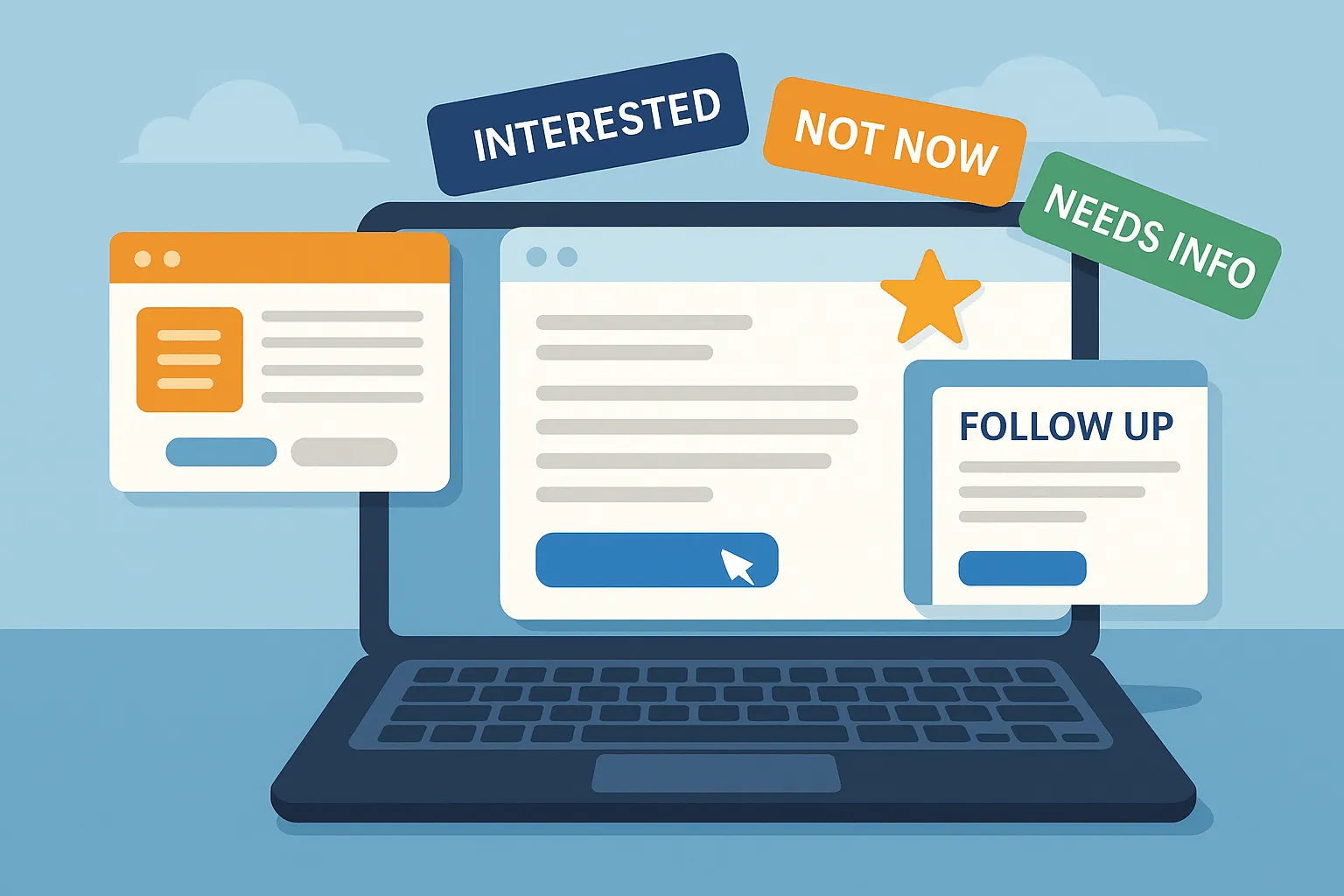
Using the right tools in a sales email can make all the difference. When you reuse good content, send reminders, and stay organized, you get better results. That’s where email templates, follow ups, and post tags come in.
What are They?
- Email templates are ready-made email formats. They save time and keep your tone and message consistent.
- Follow ups are reminder emails you send after no response.
- Post tags are labels that help you track what each message is about.
Why Do They Matter?
- Most email recipients don’t respond on the first try. That’s normal.
- Follow-up emails can increase reply rates by up to 40% (Woodpecker, 2023).
- Templates help new team members write professional email faster.
- Tags let you filter emails by sales funnel stage or customer type.
How to Use Them:
- Use email templates for common cases like initial contact, demos, or pricing.
- Send follow ups every 2–3 days (but don’t spam).
- Add post tags like “Interested,” “Not Now,” or “Needs Info” for fast filtering.
- Track message quality using open and click rates.
“Templates improve reply consistency, while tags help teams stay aligned.” — Outreach.io, 2023
"Speed up outreach with proven templates. Alore offers customizable email sequences, post tags, and auto follow-ups—perfect for closing more deals with less effort."
👉 Check it out and level up your email game today
Cold Email Writing Tips That Actually Get Replies

1. Open with Value, Not Your Bio
Don’t start with “Hi, I’m John Doe and I…” That’s a quick way to lose interest, especially with a tech savvy audience. Instead, focus on what the reader gets right away. A firm handshake in words? Start with confidence and end with clarity.
- Show you understand their business name or need.
- Offer a benefit they care about in the first sentence.
- Example: “I noticed your company is hiring SDRs. I help teams double cold reply rates with one tweak to their email templates.”
This builds instant relevance and keeps your cold email from sounding like a sales pitch.
“The best cold emails talk more about the reader’s problems than the sender’s resume.” — Sales Hacker
2. Keep It Short and Skimmable
Busy people don’t read walls of text. Learn how to craft emails that grab attention and drive replies. Hence, break your email body into 3–4 short lines.
- Use bullet points or bold for essential elements.
- Add one embedded link to a case study or social proof.
- Leave clear spacing between sections so your message breathes.
3. Avoid Spam Triggers
Using too many exclamation marks or salesy words like “FREE!!!” can land you in the spam folder. Stay professional.
- Use a clean professional email address.
- Add a simple email signature with your company name, phone number, and social media links.
- Always spell check your message before you hit send.
4. Look Human—Not Like a Template
People ignore emails that feel robotic or copied. So ditch that “Dear Sir/Madam” opening. Instead, use a professional greeting that fits the person you're writing to.
- Add the recipient’s name, company name, or a reference to something personal.
- Avoid overused phrases and generic email templates.
- Write like you're talking to a real person, not sending a script.
Pro Tip: A personal touch builds trust. Mention something specific about their work or business name if possible.
5. Always Follow Up (More Than Once)
Most replies don’t come from the first cold email. That’s why follow ups matter—big time, especially when you include a meeting request .
- Wait 2–3 days, then send a friendly reminder.
- Use tools that support email marketing campaigns to track your messages.
- Change your message slightly in each follow-up.
Stats say 80% of sales need at least 5 follow ups. Yet most people stop after one!
6. Test and Track What Works
Don’t guess. Use data to see what gets replies and what doesn’t.
- Test different subject lines, greetings, and calls to action.
- Track open and reply rates using tools built for sales email outreach.
- Avoid words that land you in the spam folder.
When you test and improve, your email becomes one of the 5 elements of an email that really drives action.
FAQs
1. What are the 5 C's of email?
The 5 C’s stand for Clear, Concise, Correct, Courteous, and Complete. They help make your message more effective and easier to understand.
Think of them as a checklist for good professional communication, ensuring your emails are correctly structured. You can use them with the 5 elements of an email to write strong, reply-worthy emails.
2. Do these elements also apply to email marketing campaigns?
Yes, they do. Whether it’s a cold email or a email marketing campaign, the basics stay the same.
You still need a compelling subject line, a clear email body, and a strong call to action. Sometimes, a little additional context helps avoid confusion.
Even email templates should follow these elements to improve your open and click-through rates.
3. How do the 5 elements of an email affect response rates?
They make your email easier to read and respond to.
For example:
- A strong subject line grabs the recipient's attention.
- A clean email signature builds trust.
- A direct call to action tells them exactly what to do next.
This structure helps you get more replies, especially in sales email or when connecting with potential clients.
4. Which part of the email gets noticed first by the recipient?
Usually, it’s the subject line and the inbox preview. That’s where the reader decides if they’ll open it. Make sure it’s relevant and not something that triggers the spam folder. Use proper grammar and sender’s information that looks trustworthy.
Tip: 33% of users open an email based on the subject line alone. — SuperOffice
5. Can I use email templates with these 5 elements?
Absolutely. Just make sure your email templates look human and not robotic. Add a personal touch. Use social media links or your company name in the email signature. Also, adjust for the email clients you’re sending to—they may format emails differently.
Establishing trust starts with honest, well-structured communication. Templates save time but only work if you customize them for each recipient.
Conclusion
If you want better replies, start with the 5 elements of an email. The five essential elements make your message clear, actionable, and professional. Use a clear subject line, add a professional email address, and write a focused email body.
Don’t forget a strong call to action and a clean email signature. These essential elements help build trust and create a great first impression.
As research shows, emails with structure and a personal touch drive more clicks. Before you hit send, always spell check and use proper grammar—it matters. As Grammarly says, “Clear writing leads to clear results.”
Emails with a positive impact are more likely to get replies.

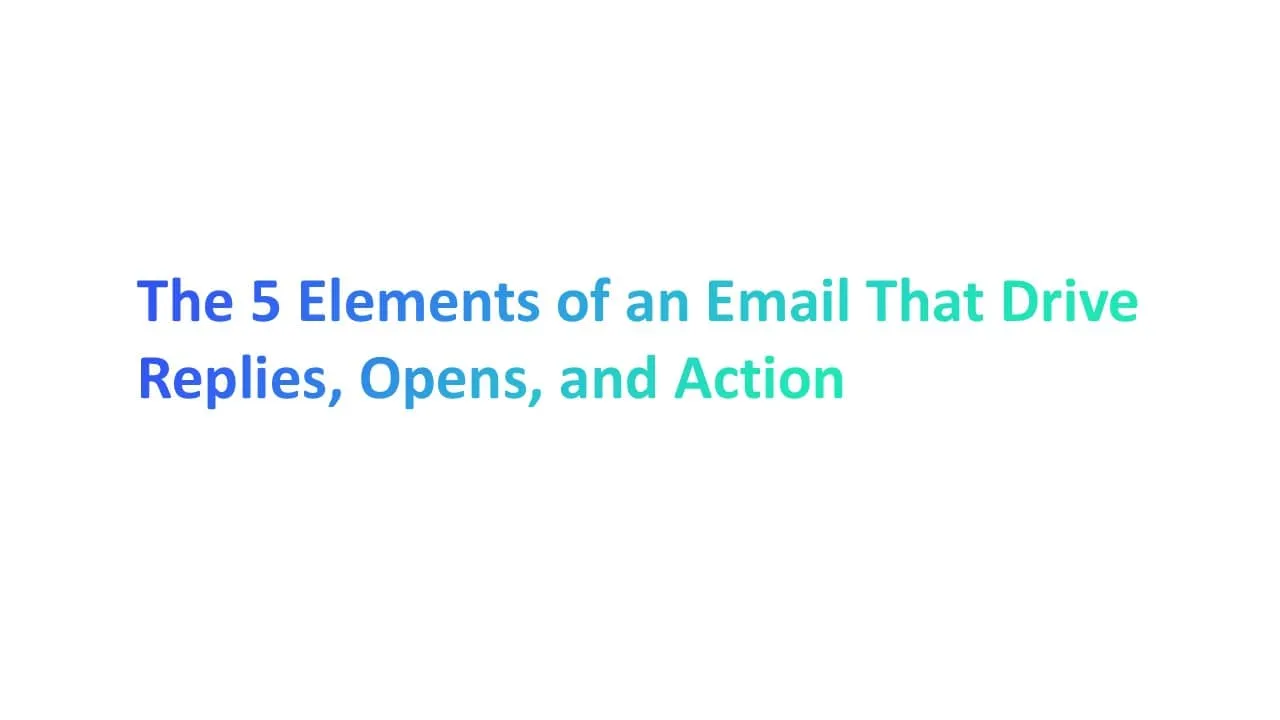



.png)
.jpg)

